These photos show the realities facing Bloomington’s unhoused population as they struggle every day just to stay alive.
On Sunday, September 15th, 2024, Agitation Rising met with Kimberly Massey of God’s Mission Ministry (GMM) at the homeless encampment on Oakland Ave next to Home Sweet Home Ministries homeless shelter. It was 90 degrees outside. GMM was offering free food to anyone including the residents of the encampment. They did this every Sunday. On average, they serve about 80 people on Sundays.


The encampment outside of Home Sweet Homes Ministry (HSHM) had approximately fifty people living there in tents. The parking lot is owned by Eastview Church. For the past year, they had allowed it to be used as an encampment for unhoused residents. The encampment was regulated by HSHM. The parking lot is not zoned for living, but the city of Bloomington looked the other way until recently.


The tents used wood pallets as a stable foundation instead of sleeping on uneven cement with potholes littered about. One tent was a completely stable structure constructed by a man named Gabriel; it was called the Taj Mahal of the encampment. One can’t help but notice the inherent ingenuity unhoused people have in order to survive on the streets.

GMM offers donations 3-4 times per week. They don’t just operate at the encampment; they travel to wherever people are including if they are in the woods. GMM provides food, water and all hygiene products: clippers, Q-tips, shaving cream, shampoo, feminine hygiene products, soap, conditioner, lotion, underwear, and socks.
“Socks are really big one,” Massey said. “I don’t think they can ever have enough socks.” White socks are more valuable than black socks because diabetics cannot wear black socks.
Unlike HSHM and Salvation Army, GMM is not limited by certain rules often attached to grants the shelters receive. GMM helps everyone, but especially those that have been banned from shelters or were otherwise ineligible to receive services. They assist those who fall through the cracks. And, there’s a lot of cracks.
“Our mission is to love on them,” she said. “To confide in us and know that we are here for them and their well-being.”


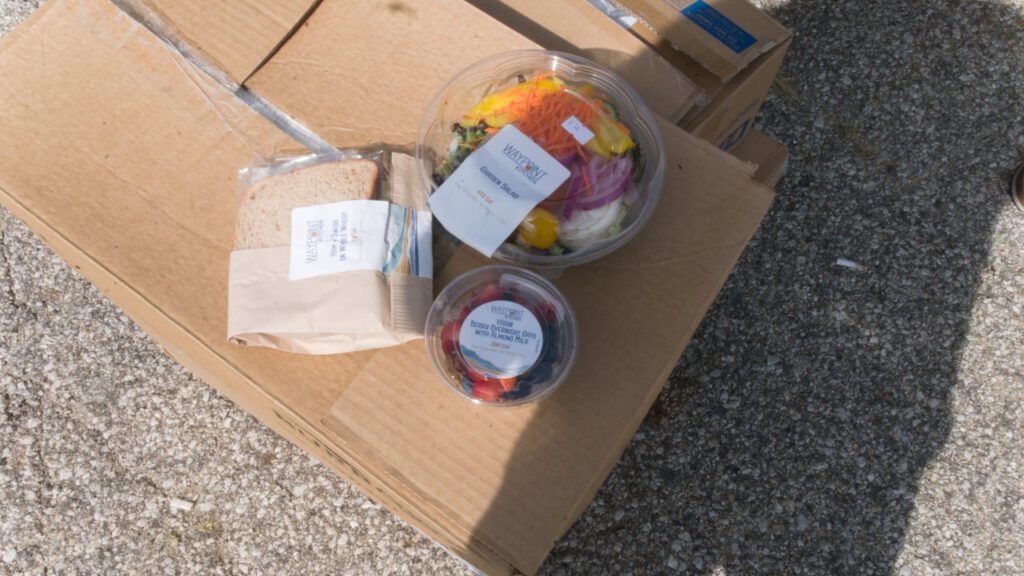

Bloomington has two homeless shelters: Home Sweet Home Ministries and the Salvation Army. HSHM has seventy beds available; Salvation Army normally has about forty beds. While there are private rooms available for families, the majority of people are living in congregate settings with no privacy and limited space to store private items.
There are currently about 150 unhoused people in BloNo who are not in shelters.
I spoke with several people living at the encampment that day. One woman, Evangala, says her biggest concern is stuff being stolen. “It means you constantly have to start over.”
The following Friday, September 20th, I traveled with Lauren Wiggins, the Street Outreach Specialist for Home Sweet Home Ministries, and Sean Boston, the Street Outreach Specialist for Chestnut. We spent most of the day traveling throughout Bloomington-Normal checking in with unhoused people throughout the community.
Wiggins goes out about twice a week always carrying Narcan, gloves, and a CPR mask. She keeps a client spreadsheet on everyone she meets. She had 95 folks on the spreadsheet, but she knows there are at least 20-30 unhoused she has yet to make contact with. (As stated above, she believes the current unhoused population on the streets is near 150 as of the time of publication).
No two days of outreach are going to be the same. On the day we went out, it was about 91 degrees out, and it had just rained the night before. We spent two hours in uptown Normal trying to find a woman to see how she is doing after the rain. We checked basement stairwells, with business owners, and with security at the Amtrak station. We were unable to find her.
We found a man sleeping outside the Amtrak station in the sun. Wiggins sat next to him slowly making contact. He was slow to awaken, and Wiggins patiently waited for the man to become aware of who was speaking to him to know this person wasn’t a threat. The man ultimately declined any help, preferring just to go back to sleep. Wiggins left him with some food, water, and her card if he needs anything.
Wiggins says her goals are to meet people where they are at, actively listen to what the unhoused are saying, identify their needs, and walk them through the steps of getting them the services they need. She provides water, food, and information on resources in the community.
More than that, she offers her presence as someone to sit and listen to people. At one location in Bloomington, we spent twenty minutes just listening to an unhoused man and his dog. Even just being listened to can be a crucial interaction that so many of us take for granted. It allows a person who is on the street, who often feels invisible to the society around them, to speak—to express their own existence and experience the reciprocity of another person recognizing and affirming said existence.

It is these little interactions that are an attempt to bring stability to a life that is inherently uncanny, where everyday a person feels as if they have to completely start over, where there is no ground upon which to walk and uplift oneself.
Every contact with someone on the street is also an opportunity to keep up-to-date on others who are camping nearby but aren’t present when we arrive.
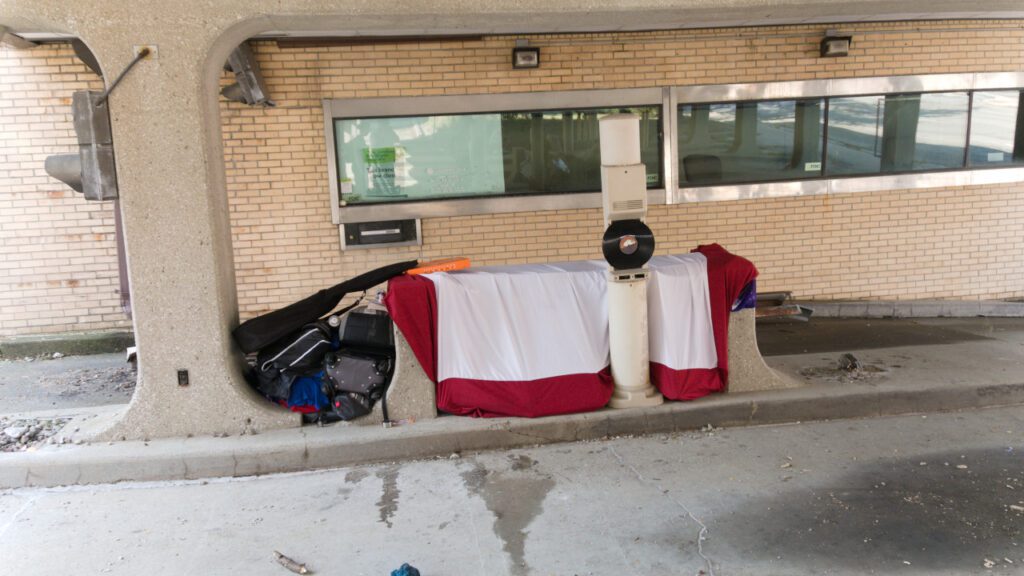
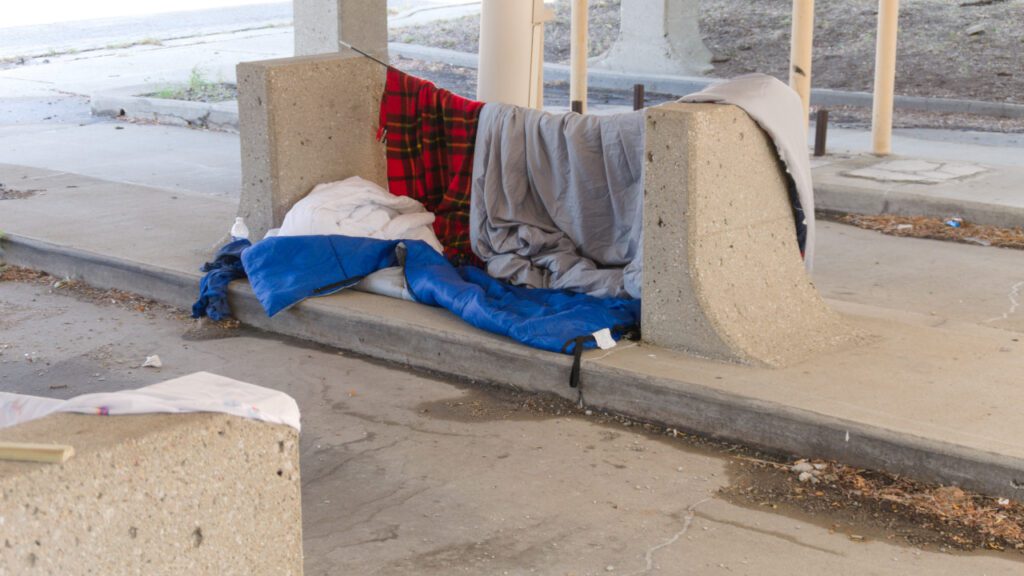
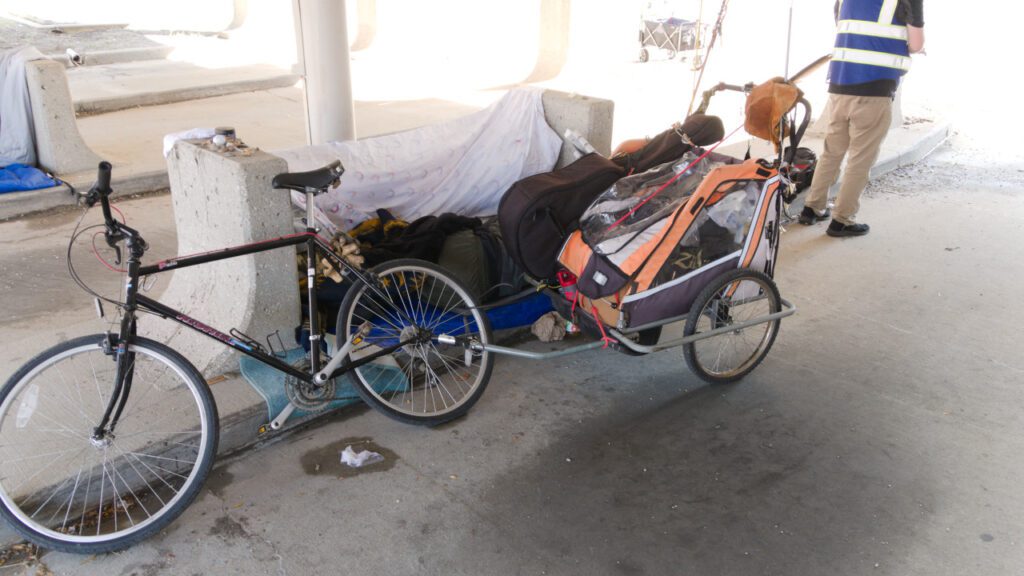
Building relationships with business owners is a part of the outreach process. They learn there are organizations actively out in the streets trying to assist the unhoused which helps ease tensions between businesses and the unhoused people who are often viewed as a threat to business interests.
There are occupational limitations though. As a Home Sweet Home employee, she’s not allowed to tell people where they can go if they don’t qualify to be in a shelter. She can’t tell them what woods would be available or assist them in re-locating there. She said it’s difficult for her to be asked questions she doesn’t have access too.
We attempted to visit an encampment which had been in the woods across the street from Mid Central Community Action (MCCA) on Washington Street in the West Side of Bloomington. But, when we got there, everything had been cleared away. You could tell a bulldozer had recently been used.

We spoke with an MCCA employee about the encampment. She said it had been torn down the day prior. MCCA has a shed on side of the building to grab free food. But, it was destroyed several times, so now it’s locked.
The owner of the lot across the street had allowed people to camp there. Right next to it is an abandoned building. Someone(s) broke into the building. This led the owner to the decision to dismantle the encampment. It was destroyed the day before.
Resources available for the unhoused:
Sean Boston, Street Outreach Specialist for Chestnut, said Chestnut offers lots of resources available to low-income individuals, not just the unhoused. They have a family health clinic which doesn’t turn people away and accepts insurance, no insurance, Medicare, & Medicaid. They have a sliding fee scale for those with lower income or no income at all. They have a dental clinic; and they offer psychiatric care, counseling, and substance abuse.
Matt Burgess, the CEO of Home Sweet Home Ministries, says they offer a community center called the Junction. It offers a space to just be. Drinks and food are available. TV, computers, games, and meeting spaces are also available. It is open 10-5.
Burgess said they also offer meal services and showers.
Massey says people can offer all the services they want, but until the unhoused know you’re genuine, the services aren’t going to work.
After a year of its existence, the encampment on Oakland is no more. The City of Bloomington decided it would no longer tolerate its presence. In September, the City of Bloomington announced plans to remove the encampment by October 15th, 2024 saying they wanted to get people in shelters before winter hits. Bloomington City Council approved an emergency declaration September 9th, 2024 allowing the City Manager to temporarily ignore building and fire codes at the Salvation Army shelter. This will allow Salvation Army to house an additional thirty-two people. It normally houses about forty people. The Salvation Army received a $50,000 donation from Eastview Church to assist with cots, bedding, and overnight staffing.
Agitation Rising spoke with Bloomington City Manager Jeff Jurgens about the City’s decision to dismantle the encampment.
“This project was always supposed to be temporary,” Jurgens said. “Once we come up on a year, it starts to feel a lot less temporary. I wanted to have something in place before the summer because of the heat. We weren’t able to come up with anything before the summer. I’m happy we were able to get the Salvation Army and get the emergency declaration approved to expand its operations. I think it’s a lot better to be in there and not the cold.”
Jurgens also said there had been a number of calls for service at the encampment requiring first responders, but he could not provide specific numbers.
“From what I’m told, part of the issue is it’s not a secure site. A lot of times, when we get a call for service it’s because someone has come on to the property who is not supposed to be there. For what it’s worth, I’m not trying to disparage or say that anyone who has been camping there are doing anything wrong.”
Encampment residents were given a notice from HSHM stating the encampment will be officially closed at 11 AM on the 15th. Any property not removed by 11:30 will be removed.

The Salvation Army expansion was always going to be a limited and short-term solution. Many people living on the streets have already been permanently banned from the Salvation Army shelter or are ineligible because of criminal history.
Burgess said both HSHM and the Salvation Army have been looking at their list of restricted people to see if they could repeal those bans. He said they were able to get a few people into their shelter a couple weeks ago.
The Salvation Army released this statement to Agitation Rising stating they are not fully ready to accept residents on the 15th. They are lacking fire safety equipment, cots, and additional staffing. The official statement reads:
“The Salvation Army is diligently working to prepare our Safe Harbor Emergency Winter Shelter, which will provide a haven for unhoused individuals transitioning from the encampment in Bloomington.
We hoped to open doors to the emergency shelter on October 15, 2024, so long as essential supplies were available for purchase and delivery and labor for facility updates could be completed quickly.
The official opening of the emergency shelter is pending the professional installation of fire safety equipment, which is scheduled for this week, and the delivery of cots, which the supplier expects to ship soon. We are currently conducting interviews for additional staffing in the shelter.
In the interim, until the Emergency Winter Shelter opens, we are taking immediate action to support individuals at the encampment through alternative programs and resources.
Our Safety Net, which typically opens during harsh winter conditions, will open on October 15 to provide unhoused individuals with a safe space, blankets, and hydration from 10:00 p.m. to 5:30 a.m. Additionally, individuals will have access to The Salvation Army’s day services, which include meals, from 8:00 a.m. to 7:30 p.m. We are also working to identify additional beds and temporary housing openings.
Salvation Army staff has visited the encampment and will continue to do so to update residents and provide individual support that meets their needs.
We continue coordinating with our community partners at the City of Bloomington and Home Sweet Home Ministries and look forward to opening doors to the Emergency Winter Shelter very soon.“
Massey says, “I’m really worried about the mental health of these clients living in cots so close together. Thirty-two people in a room with mental health illness, drug addiction, trauma, insomnia, third-shift jobs, sensory disorders.
“Some don’t understand whats going on because their brain are not equipped to deal with it.” Others have other medical issues that affect their mobility.
Burgess said, “The vast majority of people in this encampment are faced with the reality they’re going to have to encamp elsewhere in our community for the time being.”
Massey said many are planning on moving into the woods, which is more dangerous and more isolated from the services they need.
Agitation Rising News was present on the day the encampment was dismantled. Members of Home Sweet Homes Ministry, God’s Mission Ministry, PATH, Chestnut Health Systems, Bloomington Housing Commission, and Salvation Army assisted in the dismantling of the encampment. GMM helped thirteen individuals move to new locations.
In less than a month since I first visited the encampment in September, the temperature went from 90 degrees during the day to almost below freezing at night. It was 35 degrees the night the encampment was destroyed.
When asked about the success rate of getting people within the shelters into permanent housing, Burgess said it was modest at best.
Pictures of the destruction of the homeless encampment on Oakland:
Moving forward:
Burgess talked about current and future projects that HSHM is at the forefront of.
“We are leasing units and then sub-leasing to people who might not look good on paper, but who we know are really striving to get into housing,” he said. “We are sub-letting at a reduced rate, essentially subsidizing rent on a graduated basis as people get their feet under themselves. We transfer more of the rent responsibility to them with the expectation that at the end of the lease term that’s under HSH’s name, that they’ve demonstrated that they’re a good tenant, they’re making those rental payments so the lease can be transferred into their names.”
HSHM current has about 5-6 units. They’re also looking at ways to replicate the encampment, but in a way that is significantly safer and in better condition than what is normally seen.
“We’re leading the charge on a new non-congregant type of service that looks like a shelter village of small independent structures that could be pre-fabricated and specially designed for that purpose. Or they could be something like a refurbished shipping container that’s built out to be a dwelling unit. We would have a gated community of a bunch of those structures with on-site support, on-site services that is fully staffed to provide linkage to people who are fully unsheltered and unengaged in services to be indoors and then connected to services.”
Everyone Agitation Rising spoke with advocated the same long-term solutions to the unhoused crisis.
“Long-term: more affordable housing and cheaper rents,” Massey of GMM said. “Short-term: some type of open space like a gym that would allow people to put up their tents.”
City Manager Jurgens says Bloomington has no plan to pass anti-encampment ordinances for public property like the one passed in Pekin, IL.
“Frankly, I want to have a solution in place, so we have a place where people can go, get the help they need, and be in a secure environment,” Jurgens said. “That’s really been our focus, trying to look at this from a compassionate standpoint. I really hope that’s where we can land on this.”
Those looking to donate to God’s Mission Ministry should follow the links on the image below. It’s not recommended to just show up at an encampment and drop stuff off. Often what is being provided is not what the people at the encampment needs, and it usually gets thrown away. People should donate directly to the organizations mentioned above.

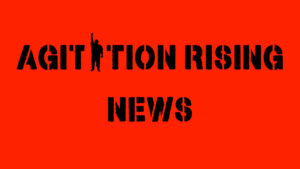

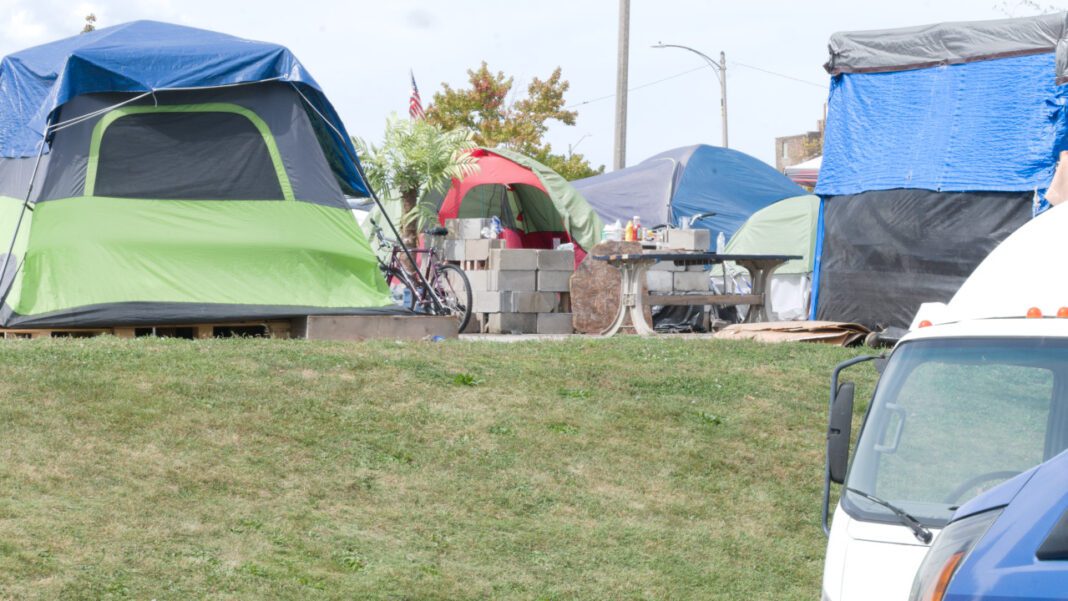
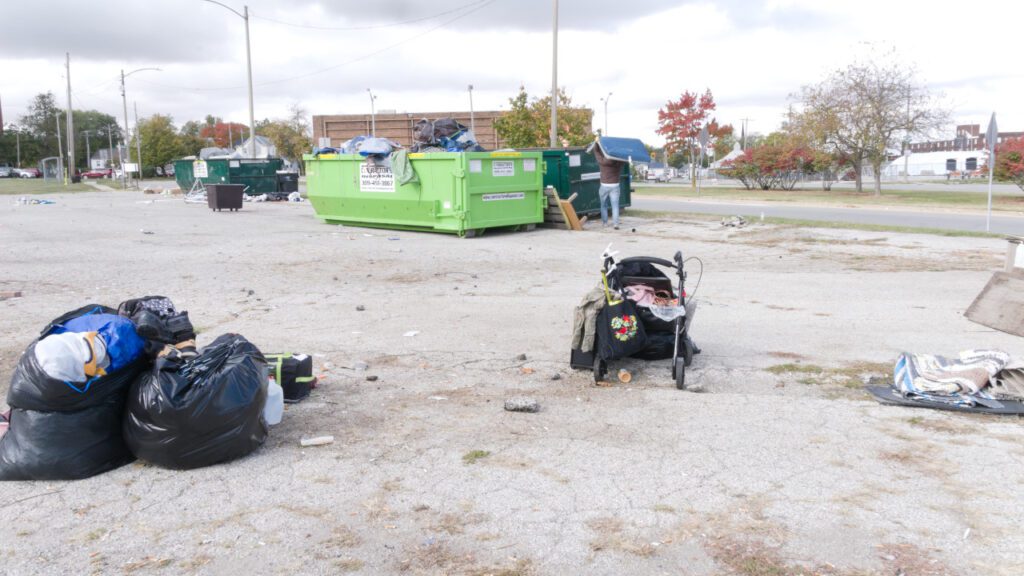
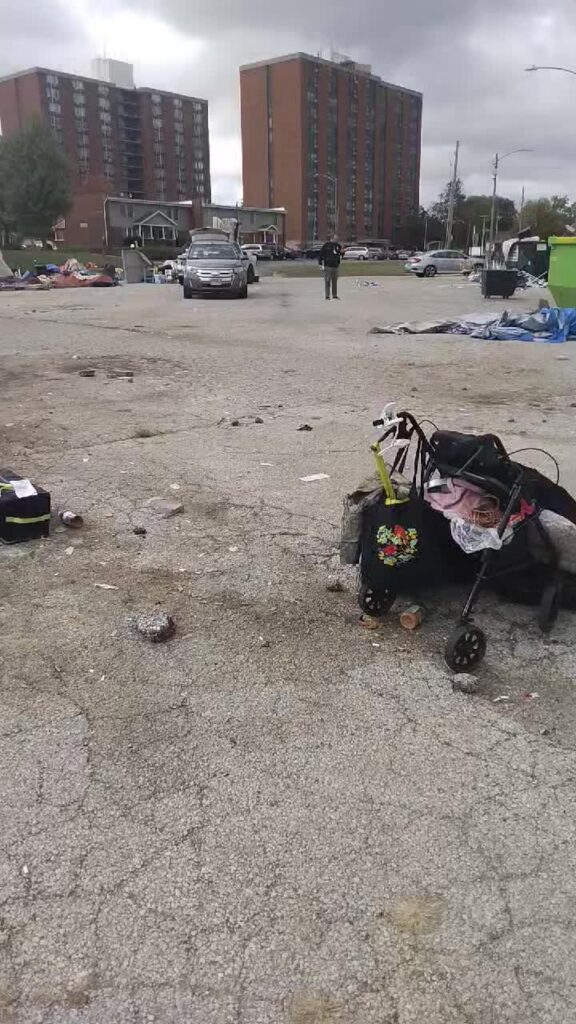




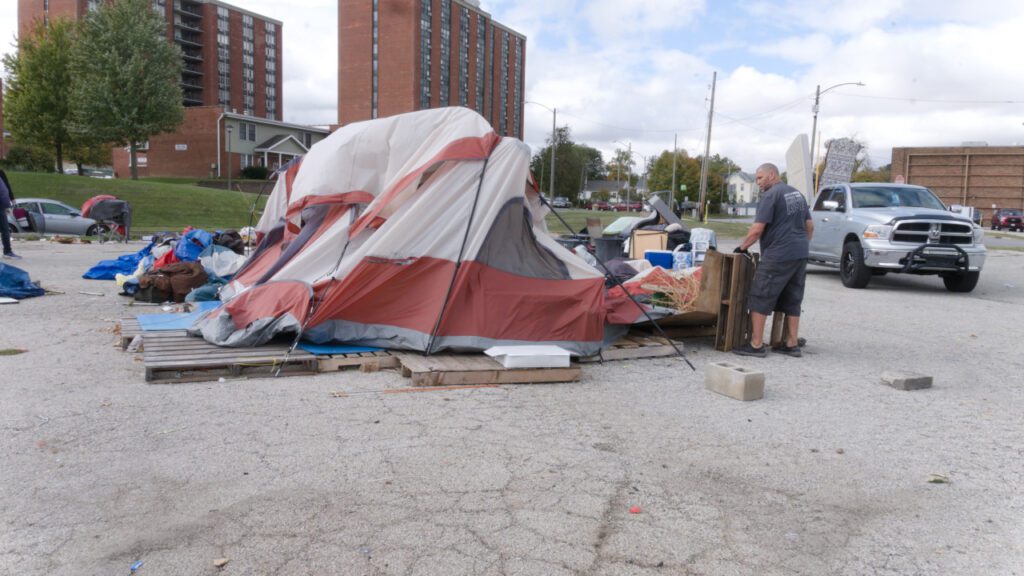







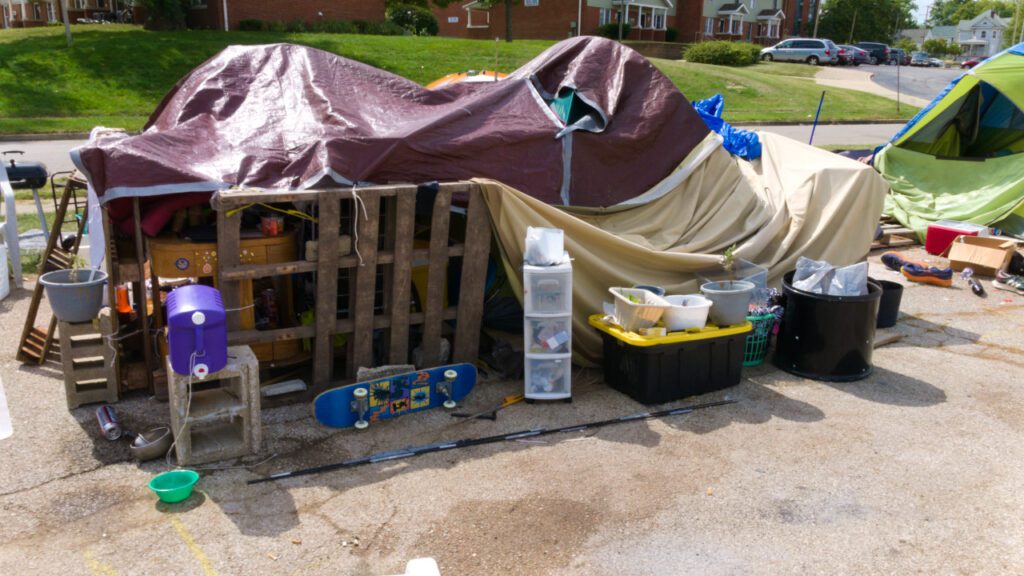



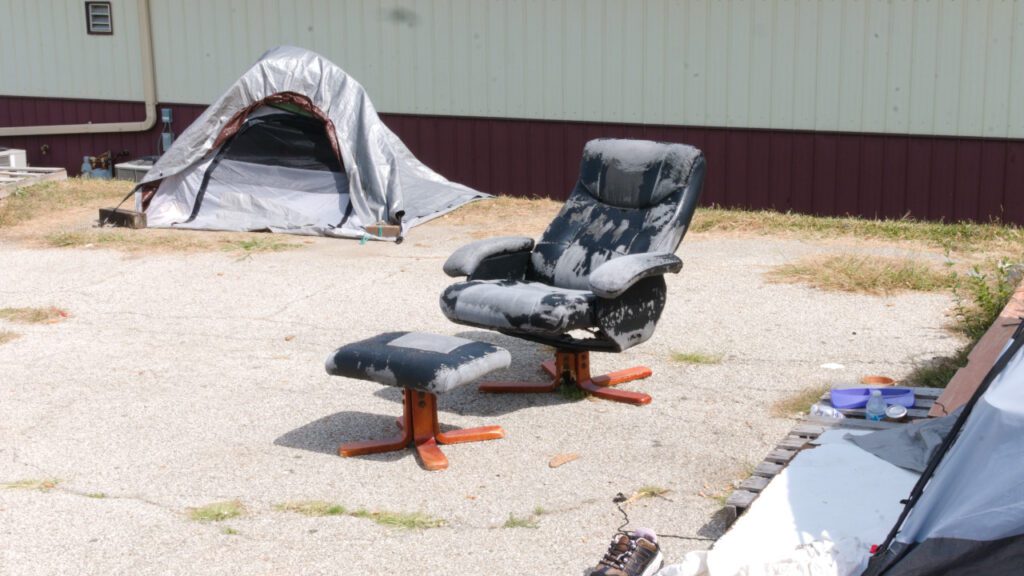
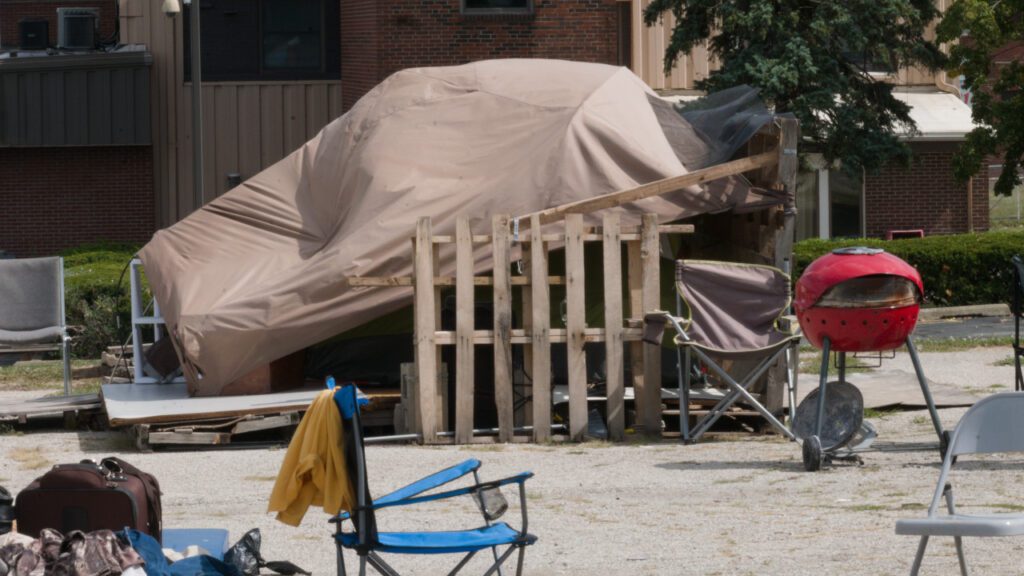


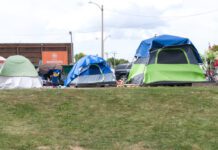






















Thank you for keeping us informed Citizens. I do not subscribe to Pantagraph due to cost. This article covers every angle.